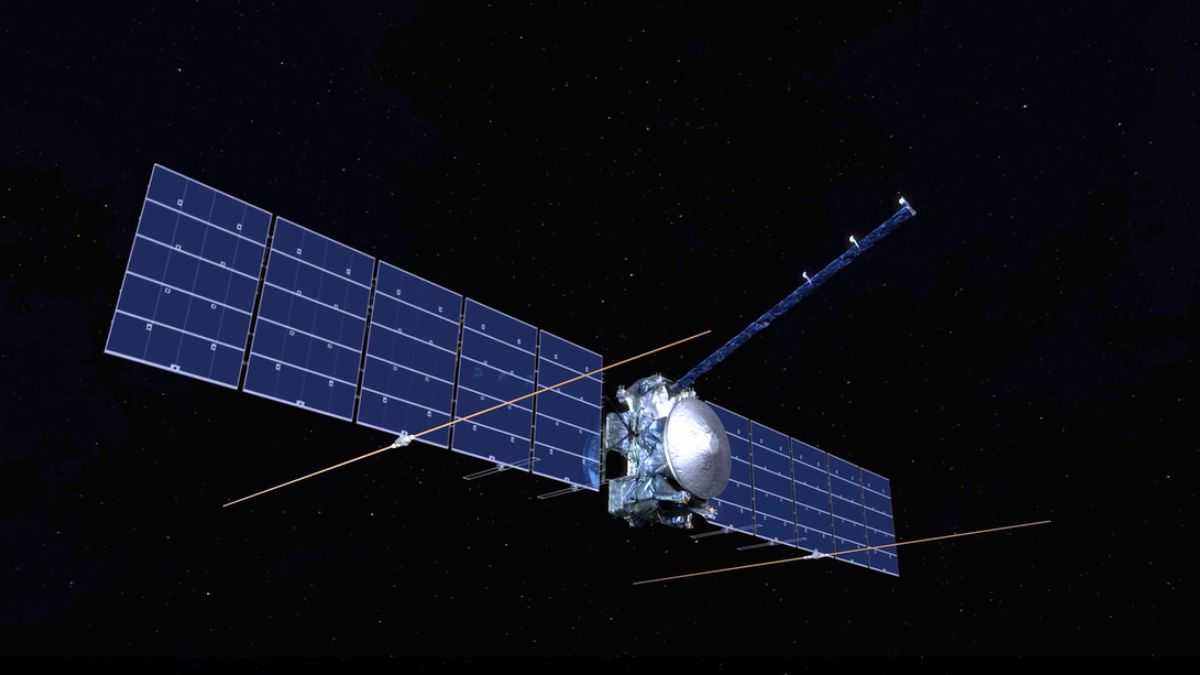Humanism
How Did Language Begin? The Great Mystery of Human Communication
25 December 2025

NASA’s spacecraft just flew past Mars, but the Red Planet is only a stopover. Its true destination is Jupiter’s icy moon Europa — and the answer to one of humanity’s greatest questions: does life exist beneath its hidden ocean?
Europa, Jupiter’s icy moon, has fascinated scientists for decades. Beneath its frozen crust, there is most likely a vast ocean — one that, according to some hypotheses, may hide simple forms of life. The search for life on Europa is the mission of the Europa Clipper, launched from Earth in October 2024. Recently, it flew past Mars, giving NASA the chance to test its advanced radar system. This test was crucial, as it could not have been carried out on Earth.
Europa Clipper uses the REASON system for scanning, which consists of two pairs of antennas, each 17.6 meters long. The antennas are mounted on giant solar panels, each the size of a basketball court. Such enormous panels are necessary because Europa receives 25 times less sunlight than Earth.
Full testing of REASON wasn’t possible before launch. Until the spacecraft was assembled, scientists used tall towers on open ground to check signals sent and received over long distances. Once the probe was fully built, it had to be kept in sterile conditions, ruling out field tests. The opportunity came only during the Mars flyby.
You might like to read: We’ve Gained a Guardian in Space. It Will Warn Us About Disasters
In March 2025, Europa Clipper passed just 884 kilometers from the surface of Mars. The flyby was needed to adjust its trajectory, using the planet’s gravity to fine-tune the course. During this time, the REASON antennas were directed toward Mars, and in just 40 minutes transmitted 60 gigabytes of data back to NASA headquarters in California. The spacecraft provided scientists with detailed images of the Martian equatorial region.
“We got everything we dreamed of from this flyby,” said Don Blankenship of the University of Texas at Austin, who leads testing of the REASON system, in a NASA statement. “The goal was to confirm the radar is ready for the Europa mission — and it is. Every part of the system performed exactly as planned.”
When the spacecraft reaches Europa, it will carry out 40 close flybys, scanning the surface each time. The data will help determine the thickness of the icy shell and study how it interacts with the subsurface ocean. Europa Clipper will provide unprecedented details about the geology of the frozen moon — knowledge that could be key to discovering extraterrestrial life.
Importantly, the Mars test was conducted from 884 km above the surface, but once at Europa, the spacecraft will descend to just 25 km from the moon. Before that, however, Clipper has one more stop — Earth. It will swing by our planet at the end of 2026, using its gravity for a final course adjustment. After that, it will head straight to Jupiter and its icy moon. By 2030, after traveling nearly 3 billion kilometers, Europa Clipper will begin its historic survey of Europa.
Read the original article: 60 GB danych z Marsa. Sonda NASA jest gotowa na historyczną misję

Truth & Goodness
24 December 2025


Zmień tryb na ciemny